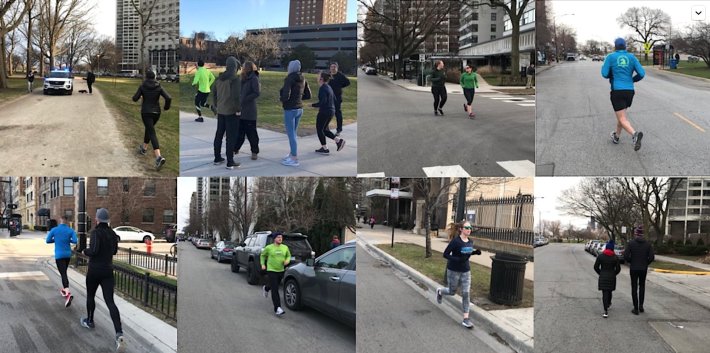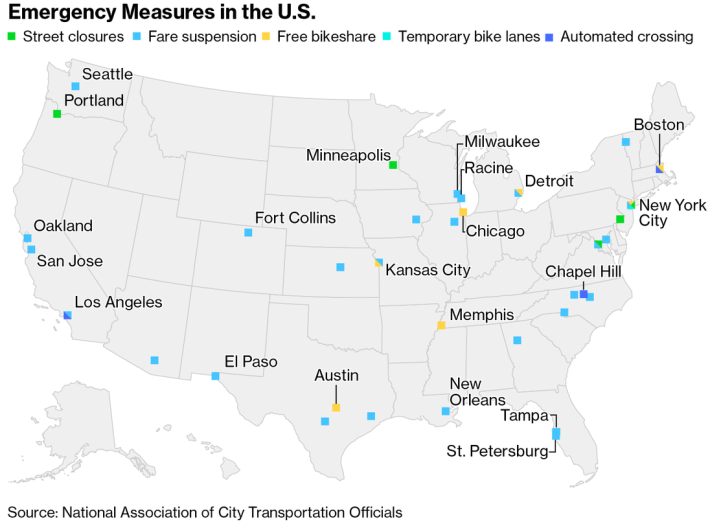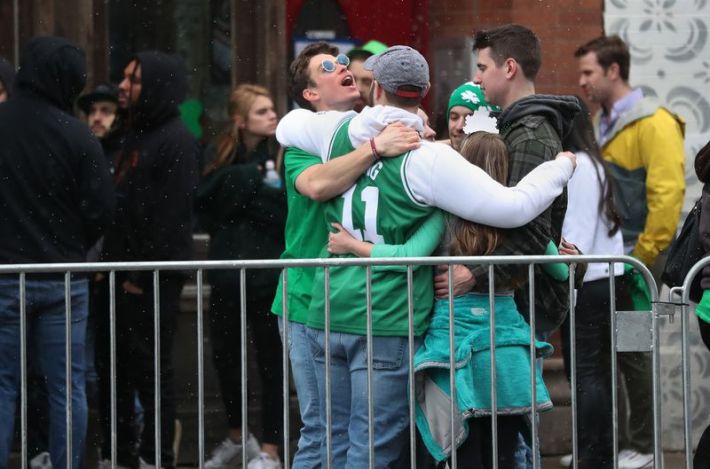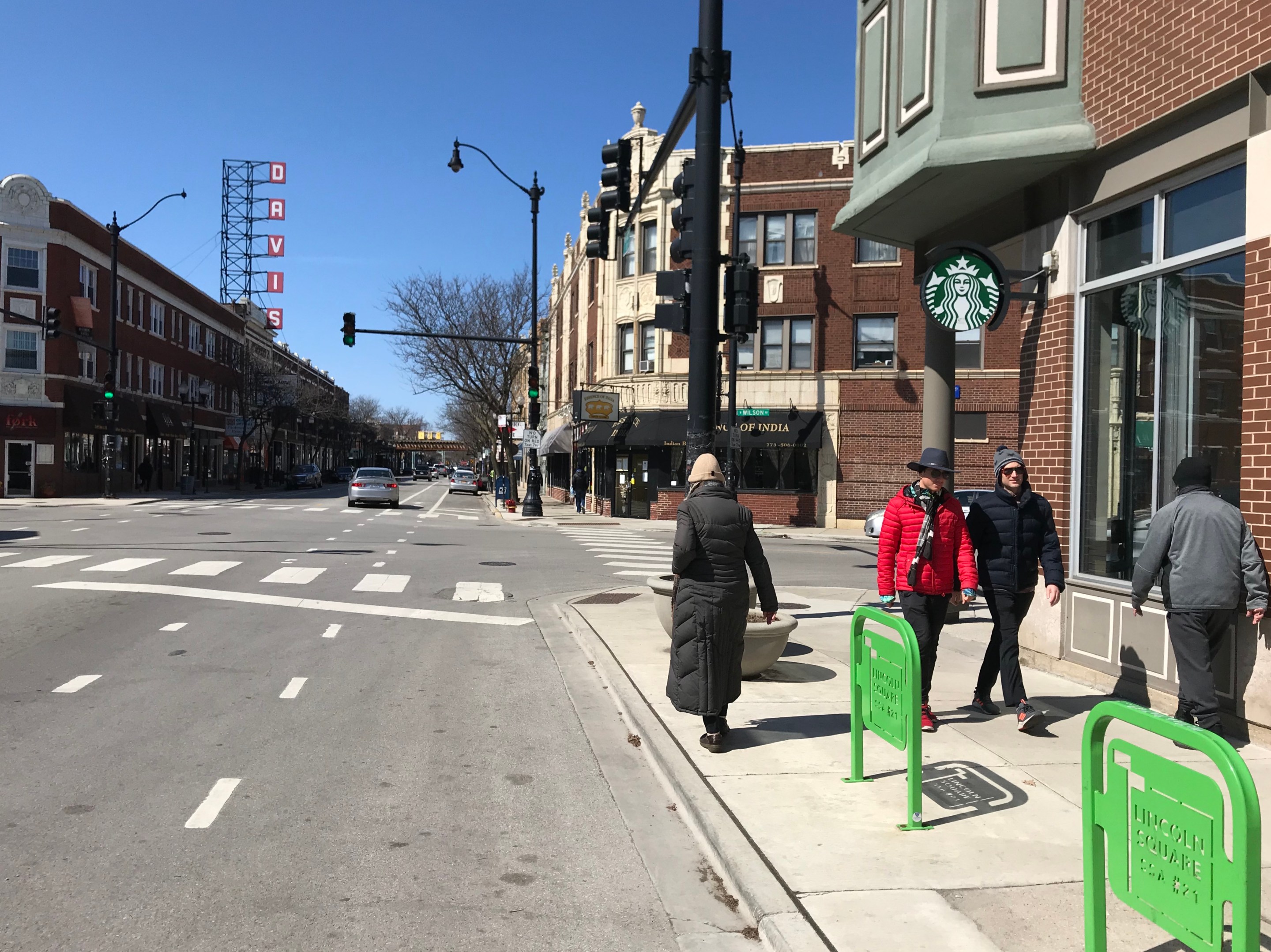I've been seeing a lot of negativity online about people walking and running failing to practice social distancing rules by giving their fellow pedestrians a six-foot berth when passing on sidewalks, especially on retail corridors. Most of the places where I've witnessed or heard about this being an issue are relatively dense, walkable North Side neighborhoods like Lakeview, Lincoln Park, Uptown, Ravenswood, North Center, and Lincoln Square. (I'm told that this is less of a thing in more lightly-populated and/or car-oriented communities like Woodlawn on the South Side and Belmont Cragin on the Northwest Side.)
I've read complaints about conflicts with runners, couples, and families who aren't making room for others, either through cluelessness or apparent attitudes of entitlement. Personally, nowadays when I'm walking and another party is coming in the other direction, I automatically walk to the curb or the parkway. (Be sure to watch your step if it's the latter, in case there are any negligent dog walkers in your area.)

On the other hand, I've heard of drivers yelling at pedestrians who step into the street to avoid crowds on sidewalks. And, to be honest, I feel a little nervous for the many joggers I've seen in the road on thoroughfares like Inner Lake Shore Drive, the closest surface street to the off-limits Lakefront Trail, which seems to be absorbing a lot of the displaced foot traffic from the shoreline path. That's especially true since so many drivers are speeding on the nearly-empty streets during Stay at Home. And, of course, when people are walking or running in bike lanes, that's not an ideal situation for safety either.
So it raised my eyebrows a bit when I saw this email from a North Side alderman encouraging people to run in the street. (I won't say which one, because this official is generally strong on sustainable transportation issues, and I don't want them to get sued if a driver runs over a jogger in their ward.)

But in this situation, we should be hating the game, not the players. The problem isn't so much people on foot being inconsiderate or irresponsible during the pandemic. (And please spare me the "Stay home!" mantra -- going for walks and runs is classified as an "essential activity" under Illinois' pandemic order, and Chicagoans need to be able to get fresh air and exercise if we're going to make it through a multi-month quarantine with our physical and mental health intact.)
Rather, the underlying issue is that that so much of the public right-of-way is allocated to moving and parking large metal boxes, while pedestrians typically get mere scraps in the form of six-foot-wide sidewalks. Here at Streetsblog Chicago we've advocated for opening up entire streets across the city for car-free transportation and recreation, a social-distancing strategy that's currently being done in U.S. cities like New York, Philadelphia, Denver, St. Paul, and Portland.

In light of all the other cities that are doing this, opening up entire Chicago streets is a very reasonable ask. But since Mayor Lori Lightfoot has so far shown no interest in doing so, let's put out a more modest proposal.
Now, I realize that most residents view drunken, rowdy Wrigleyville bar crawls as one of the worst aspects of Chicago culture. That opinion surely didn't change after hundreds of people selfishly ignored coronavirus safety warnings and thronged bars on Clark Street for St. Patrick's Day celebrations, putting themselves and other residents at risk for contracting COVID-19.
But if there's one redeeming quality of these kind of events, it's the clever use of public space. The parking lanes along Clark are cordoned off with portable fencing and used to provide more space for revelers.

Why don't we use the same tactic on retail corridors where pedestrians are currently having to dodge each other? Granted, we'd need to leave some on-street car parking in place. But so many non-essential stores are closed right now that there's very little parking demand, so fencing off one of the lanes on a street like Lincoln Avenue in Lincoln Square wouldn't cause a parking crunch.
Another benefit of this strategy is that drivers tend to hit the brakes whenever they see an unusual street layout, so the fencing would double as traffic calming. That would help address the current speeding problem.
The fly in the ointment is that Chicago's much-detested 75-year parking contract requires the city to compensate the concessionaire for the loss of meter revenue during events like farmers markets, street fairs, and Wrigleyville's notorious Twelve Bars of Christmas crawl. But, since the concessionaire isn't making any money off these meters right now anyway, maybe it could be talked into doing the right thing by letting the city fence off parking lanes to create safer pedestrian conditions for no charge. If not, I'd certainly be willing to my part to persuade the concessionaire through merciless online shaming.
So what do you say Mayor Lightfoot and aldermen of wards impacted by crowded sidewalks? Let's give this a go.
Here are some tips on preventing the spread of COVID-19, and advice for Chicagoans on what to do if you think you may have been exposed to the virus.





